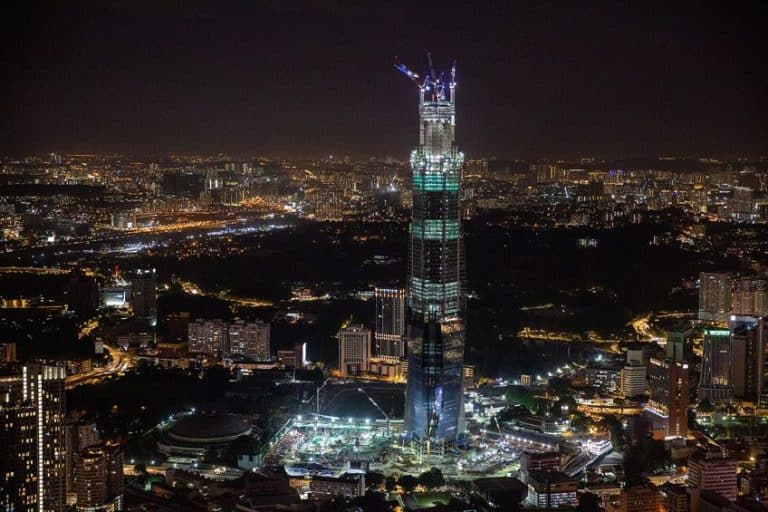Oldest Building in New York City – History of Buildings in NYC
New York City is famous for its ultra-modern skyscrapers, yet, the history of buildings in N.Y.C. actually stretches back hundreds of years. Today, our aim is to discover the first building in N.Y.C. Is it a church, governmental building, or the oldest house in N.Y.C.? So, what is the oldest building in New York City as of today?
What Is the Oldest Building in New York City That Still Exists Today?
Many people around the world consider New York City to be one of the most recognizable cities on the planet. The city is jammed packed with memorable sights such as Central Park, Times Square, the Statue of Liberty, Broadway, and of course, the magnificent old buildings from the grand eras of the past.
It was originally called New Amsterdam and was a Dutch Colony built by the Hudson River – the perfect location to trade with people from all around the world.
It, therefore, grew into a thriving city, and eventually became a renowned hub of cultural and financial activity, with many buildings being constructed to house and accommodate the rising population and businesses. The history of buildings in N.Y.C. is intertwined with the history of the city itself, changing and advancing over the centuries to meet new demands and expectations.
The Wyckoff House (1640)
| Architect/Owner | Wouter van Twiller (1606 – 1654) |
| Date Built | 1640 |
| Function | Residence |
| Location | Brooklyn, New York City |
The oldest building in New York City, Wyckoff House was built in 1640. The edifice was among the very first constructions erected by Europeans on Long Island, and its survival is very extraordinary, particularly given its lack of history.
Certainly, the oldest house in N.Y.C. has been renovated multiple times over the years, but for the majority of its almost 400-year existence, it was merely a homestead and family home.

The first building in N.Y.C. is now a museum dedicated to illustrating how farming worked in the past and how it is still vital today. Wouter van Twiller had several houses erected before being called back to Holland in 1640. It is thought to have been constructed between 1636 and 1640 before Van Twiller departed for Holland.
The Riker-Lent-Smith Homestead (1654)
| Architect/Owner | Abraham Riker (1832 – 1917) |
| Date Built | 1654 |
| Function | Homestead and cemetery |
| Location | Queens, New York City |
Abraham Riker constructed the first section of this residence in 1656. He was one of the early residents of New Amsterdam and a member of the Riker family, who named adjacent Rikers Island; the mansion was occupied by the Rikers and Lents for much of its existence. Abraham Lent, a descendent of Abraham Riker, extended and made improvements to the home in 1729.
There has practically never been a time in history when the building was unoccupied. Despite numerous restorations, the house has mainly remained intact, and the owner occasionally allows tours of the residence.
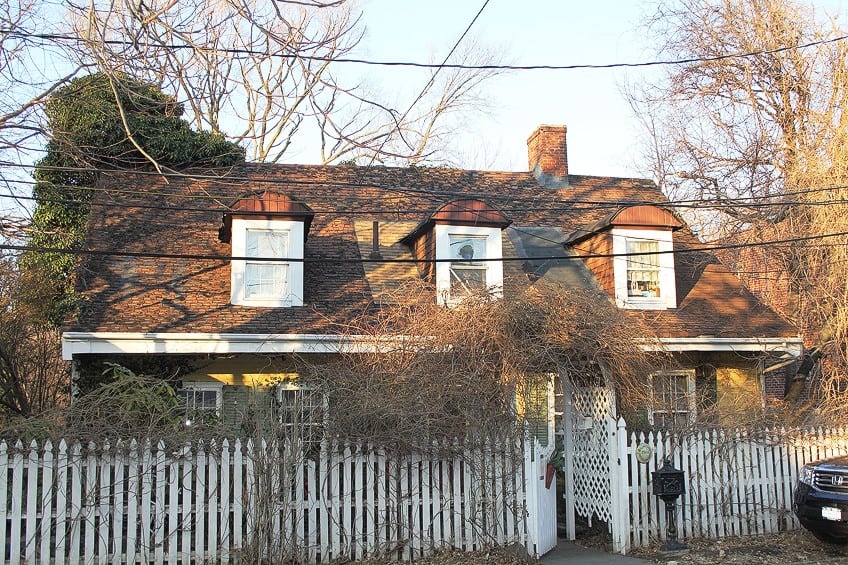
The little graveyard not only holds family members’ graves but also those of Irish patriot and doctor William James MacNeven, who passed in 1841 and had resided with the Rikers. Somewhere around 1800, the house was once again extended to its current size, and it is still an entirely Dutch Colonial-style residence.
The Billiou-Stillwell-Perine House (1662)
| Architect/Owner | Pierre Billiou (1632 – 1708) |
| Date Built | 1662 |
| Function | Residence |
| Location | Staten Island, New York City |
Pierre Billiou, a Huguenot who settled in New Amsterdam in 1661 fearing religious persecution in France, originally constructed the home. In the same year, he formed Old Town and obtained a land grant on Staten Island, where he built the first stone component of his residence in approximately 1662. The property was inherited by his daughter, who lived there with her husband.
Direct descendants of the Billiou family are still alive in America as of 2023 with the modified surname of Bilyeu.
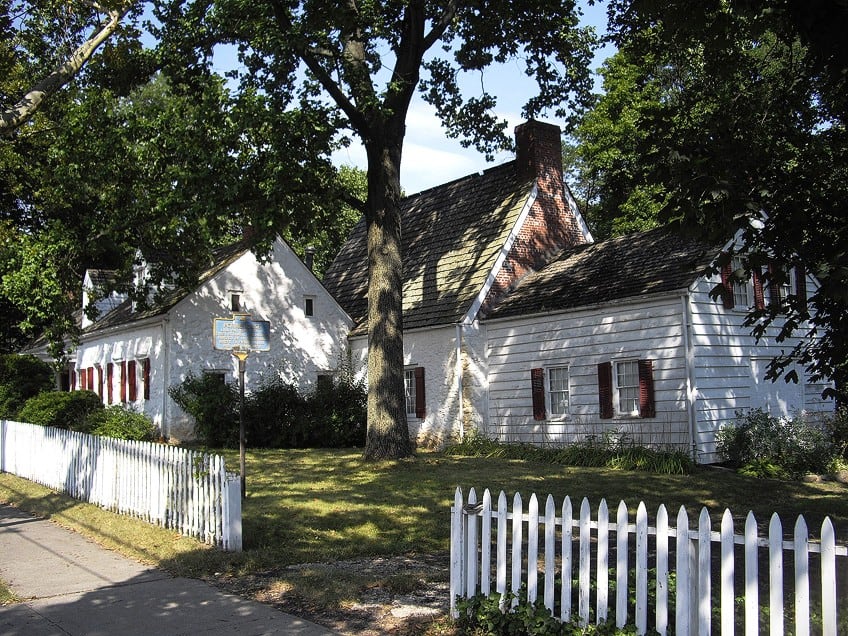
Thomas Stillwell, a wealthy landowner, extended the home in 1680. It was owned by his and Martha’s successors, the Brittons, until the mid-18th century. It was later purchased by Edward Perine, whose family occupied it until 1913.
The Jan Martense Schenck House (1676)
| Architect/Owner | Jan Martense Schenck (1631 – 1687) |
| Date Built | 1676 |
| Function | Residence |
| Location | Brooklyn, New York City |
The Jan Martense Schenck House, the only structure on this list that exists within a museum, has a long and strange history. This farmhouse was initially erected in 1676 and has had various renovations and extensions since then. The home was owned by the Schenck family for three generations until being sold in 1784. When real-estate development surged in the 1920s, a variety of preservation proposals that may have kept the home on-site were suggested but never implemented.
The Brooklyn Museum resolved to preserve this home in 1952 when it was on the verge of being razed as the rest of the city expanded.
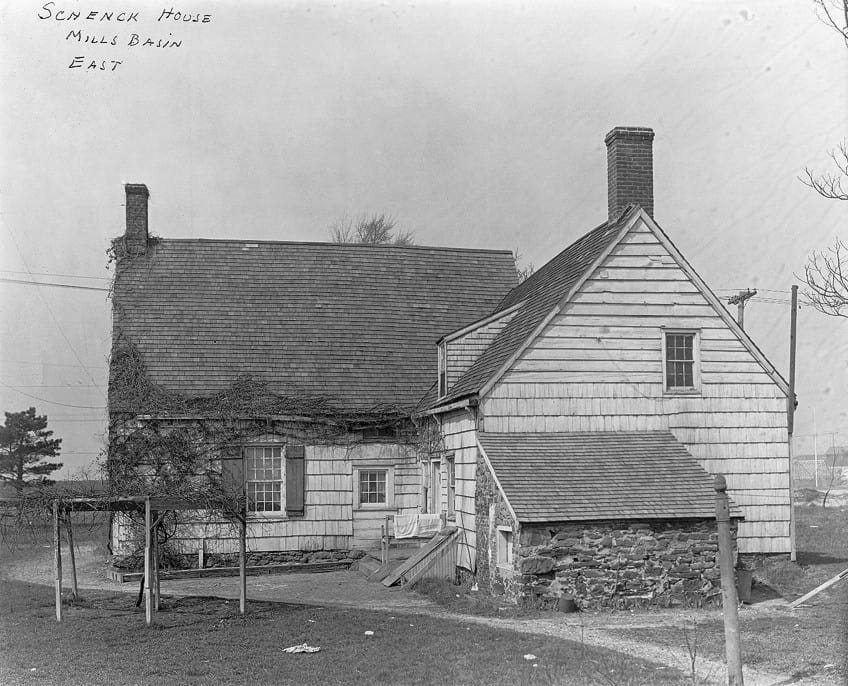
The museum dismantled the structure and utilized the original wood to replicate it within the museum. While it is not the original home, it is quite close to what it would have originally looked like all the way back in the 1730s.
Fraunces Tavern (1719)
| Architect/Owner | Stephen Delancey (1663 – 1741) |
| Date Built | 1719 |
| Function | Tavern and museum |
| Location | Lower Manhattan, New York City |
Fraunces Tavern was originally constructed as his personal residence in 1719. In 1737, it was converted into a rental home and dance hall. In the 1750s, it was turned into commercial offices and was then subsequently became a tavern in 1762. It was a prominent meeting ground for businessmen, politicians, and revolutionaries in the period prior to the American Revolution.
The tavern even played a role in American history, when General George Washington said goodbye to his officers there following the conclusion of the Revolutionary War in 1783.

Fraunces Tavern now functions as a restaurant and museum featuring displays of the American Revolution and the formative years of America. Guests are able to view artifacts and exhibitions relating to the American Revolution, such as a handwritten copy of George Washington’s farewell message to his men.
The Hendrick I. Lott House (1720)
| Architect/Owner | Hendrick Lott (c. 17th century) |
| Date Built | 1720 |
| Function | Residence |
| Location | Brooklyn, New York City |
Johannes Lott obtained land from the Voorhies family in 1719 and built a small home around 1720. This home was integrated into a bigger home built around 1800 by his grandson Hendrick I. Lott. From the outside, the Lott House resembles a conventional Dutch-American vernacular farmhouse. It has the typical gambrel roof that these buildings are known for.
The home’s interior, though, is grander in style. Its high ceilings, elaborate fireplaces, mantles, and embellishments showcase Hendrick’s career as a house carpenter during the last years of the 18th century.

The Lott family has owned this property since the 1700s, making it the oldest continuous ownership of a building in New York City. In 2001, the Lotts sold the property. It also served as a station on the Underground Railroad at one point.
The Stoothoff-Baxter-Kouwenhaven House (1747)
| Architect/Owner | Unknown (ancestor of Garret Stoothoff) |
| Date Built | 1747 |
| Function | Residence |
| Location | Brooklyn, United States |
This historic structure, which was built in 1747, has been relocated multiple times during its existence. It is a representation of the kind of house built by Flemish farmers who arrived in Brooklyn’s Flatlands during the early colonial era. While this house did not play a significant role in the history of the country, it is an intriguing insight into the past, especially given that most buildings from that era suffered a far more terrible fate through fire or destruction.
The home is titled after a succession of families that resided there from its erection until the 1920s.
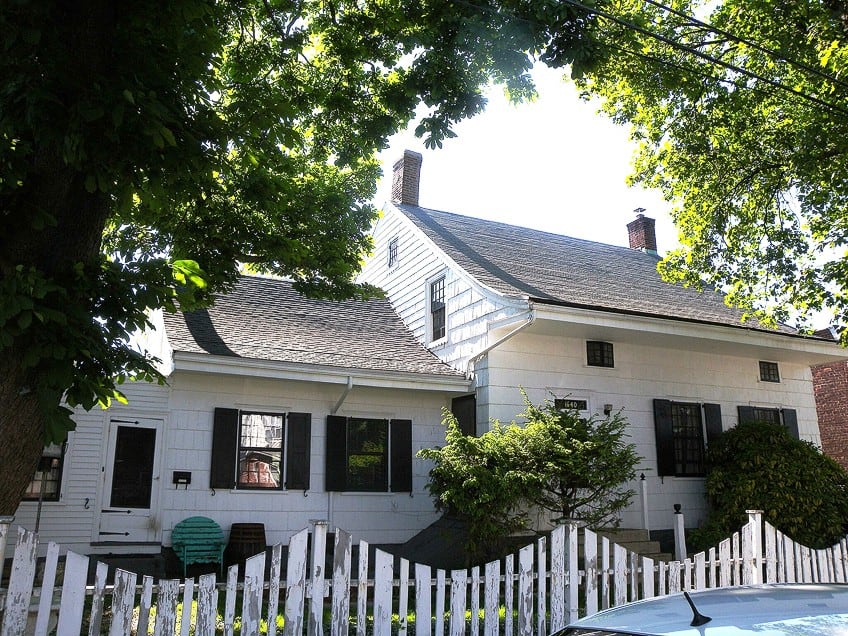
The original construction is thought to have been undertaken by one of Garret Stoothoff’s ancestors. The 1811 addition was built by John Baxter, who married Garret Stoothoff’s daughter in 1796 and subsequently inherited the house. The home is believed to be haunted by Baxter’s ghost.
Morris-Jumel Mansion (1765)
| Architect/Owner | Roger Morris (1727 – 1794) |
| Date Built | 1765 |
| Function | Residence and museum |
| Location | Upper Manhattan, New York City |
The Morris-Jumel Mansion is the oldest extant residence in Manhattan, with a rich history dating back over 250 years. It was designed as a holiday home for British Colonel Roger Morris and Mary Philipse, his wife. During the American Revolution, it served as a military headquarters and was inhabited at various periods by both American and British soldiers.
Stephen Jumel, a renowned French wine trader, and his wife Eliza, who was famous for her lavish lifestyle and social connections, bought the property in 1810.
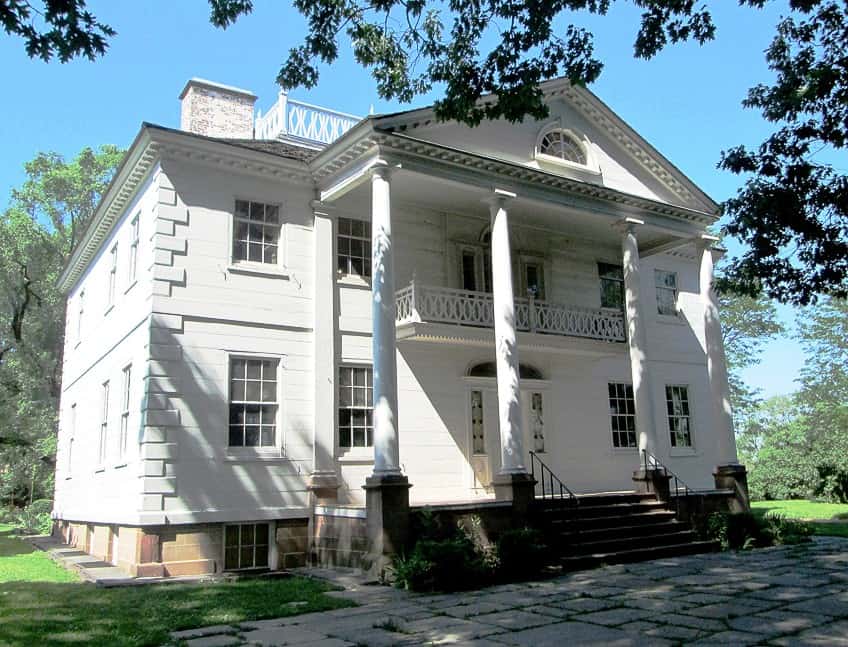
Throughout the mid-20th century, the area became a bustling home to many Harlem Renaissance personalities, notably Jackie Robinson, Paul Robeson, Duke Ellington, and Thurgood Marshall. The house and its surrounding structures are now part of the Jumel Terrace Historic District. As a result, the character of the nearby area has altered relatively little since the turn of the century.
St. Paul’s Chapel (1766)
| Architect/Owner | Peter Harrison (1716 – 1775) |
| Date Built | 1766 |
| Function | Chapel |
| Location | Lower Manhattan, New York City |
This church was constructed as a chapel for Trinity Church parishioners who lived north of the city borders, and it was finished in 1766. The church went through a turbulent phase in its early years, barely escaping the fire that gutted the adjoining Trinity Church in 1776.
The chapel was luckily spared during the British siege of New York City during the American Revolution and served as a house of worship for Sir William Howe and Lord Cornwallis.
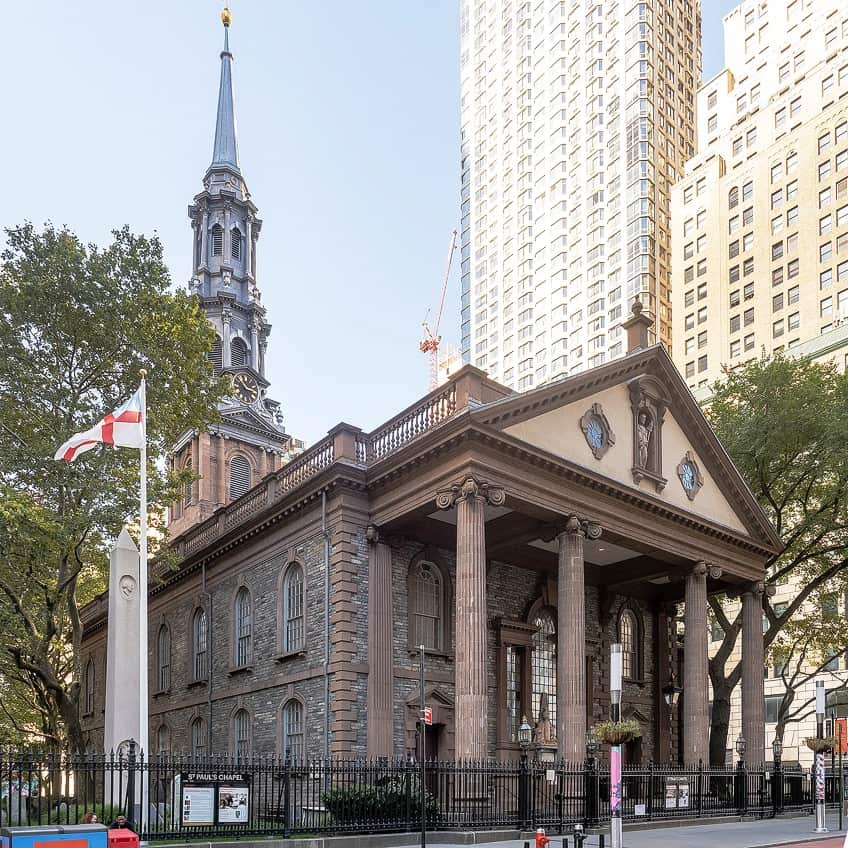
During the Revolutionary War, New York City temporarily functioned as the United States’ capital. George Washington and a handful of other Founding Fathers memorably worshiped at the church on the 30th of April 30, 1789, right after his inauguration, while Trinity Church was still being reconstructed. Washington’s pew is still standing and may be viewed by the general public.
Captain Joseph Roe House (1781)
| Architect/Owner | Captain Joseph Roe (1755 – 1829) |
| Date Built | 1781 |
| Function | Residence |
| Location | Manhattan, New York City |
This Georgian-style residence is Manhattan’s third oldest. Captain Rose was a mahogany importer for the New York market from the Bay of Honduras. He constructed the building to serve as his home, but because he spent so much time at sea, he leased it out to traders and their families. Christopher “Kit” Burns ran a tavern in this house and it became notorious for organizing dog and rat fights as entertainment for guests.
Because a blaze in 1904 damaged the original third floor and roof, the wall above the second-floor dates from after that year.
Another fire destroyed the inside in 1974. The property was repossessed by the City two years later for taxes owed and stood vacant for 20 years. Frank Sciame, Jr. purchased the property for $1.00 in 1997 and turned it into multiple luxury apartments.
With that, we come to the end of our search for the oldest building in New York City. The history of buildings in N.Y.C. that have been around for so long is very interesting, as it reveals the early days of the region and the European settlers that helped create it. Without these original pioneers, New York City would not be the bustling metropolis that it is today.
Frequently Asked Questions
What Is the Oldest Building in New York City at the Moment?
The oldest house in N.Y.C. is the Wyckoff House. It is believed to have been constructed sometime between 1636 and 1640. It was constructed by an employee of the Dutch East India Company, Wouter van Twiller.
Where Is the Oldest House in N.Y.C?
It is located in Brooklyn on Clarendon Road, and is known as the Wyckoff House. The oldest house in N.Y.C. is one of the earliest existing examples of a Dutch frame house in the United States. The majority of the existing construction dates from the 19th century, while the little kitchenette was added in the 18th century.
Justin van Huyssteen is a freelance writer, novelist, and academic originally from Cape Town, South Africa. At present, he has a bachelor’s degree in English and literary theory and an honor’s degree in literary theory. He is currently working towards his master’s degree in literary theory with a focus on animal studies, critical theory, and semiotics within literature. As a novelist and freelancer, he often writes under the pen name L.C. Lupus.
Justin’s preferred literary movements include modern and postmodern literature with literary fiction and genre fiction like sci-fi, post-apocalyptic, and horror being of particular interest. His academia extends to his interest in prose and narratology. He enjoys analyzing a variety of mediums through a literary lens, such as graphic novels, film, and video games.
Justin is working for artincontext.org as an author and content writer since 2022. He is responsible for all blog posts about architecture, literature and poetry.
Learn more about Justin van Huyssteen and the Art in Context Team.
Cite this Article
Justin, van Huyssteen, “Oldest Building in New York City – History of Buildings in NYC.” Art in Context. July 3, 2023. URL: https://artincontext.org/oldest-building-in-new-york-city/
van Huyssteen, J. (2023, 3 July). Oldest Building in New York City – History of Buildings in NYC. Art in Context. https://artincontext.org/oldest-building-in-new-york-city/
van Huyssteen, Justin. “Oldest Building in New York City – History of Buildings in NYC.” Art in Context, July 3, 2023. https://artincontext.org/oldest-building-in-new-york-city/.






